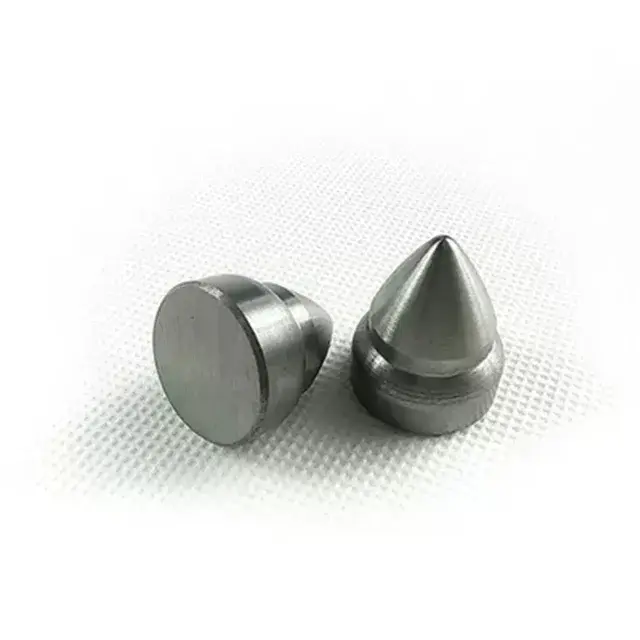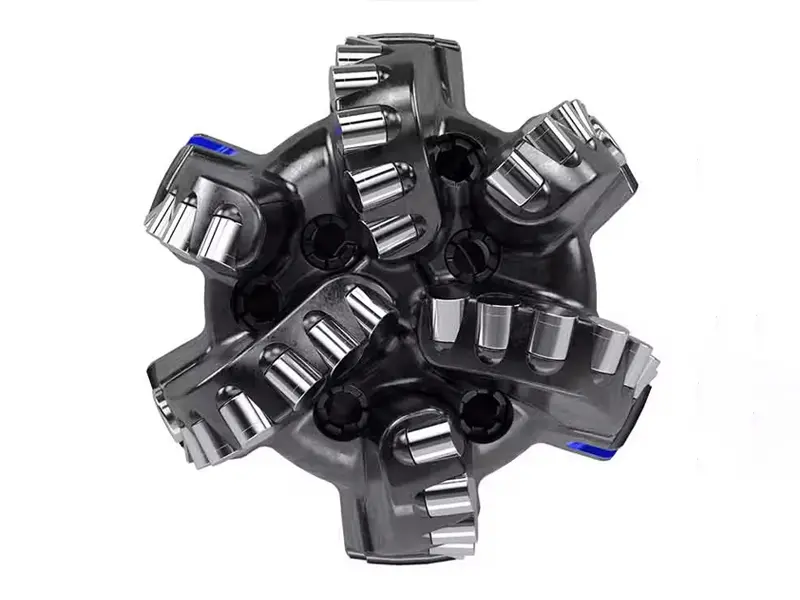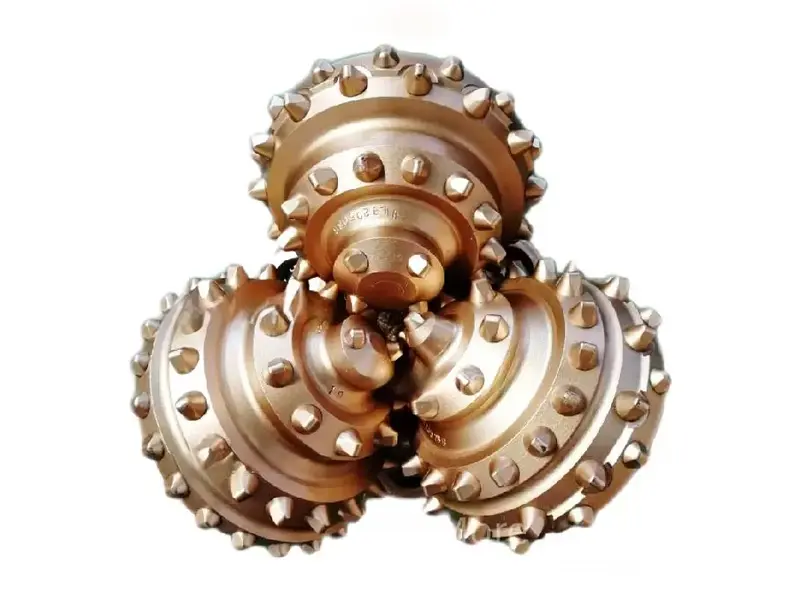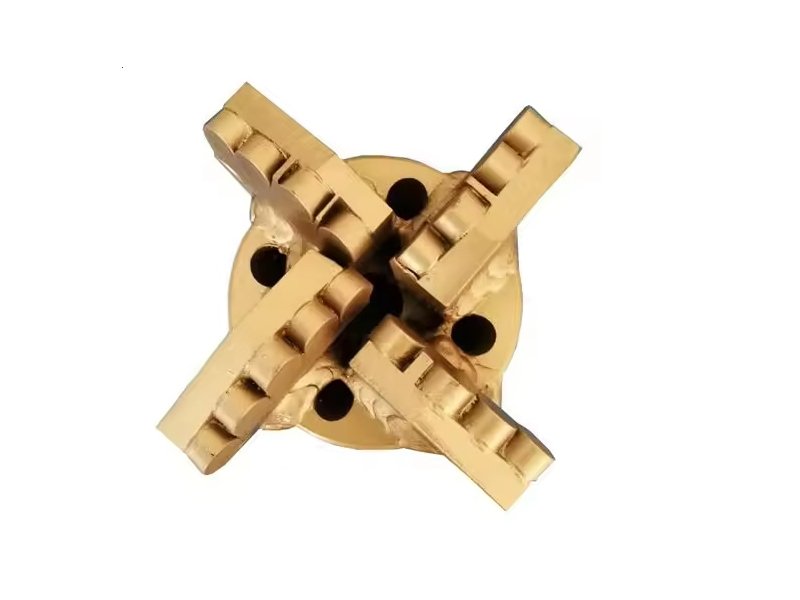Tungsten Carbide Buttons
Made from tungsten carbide, these buttons offer superior impact resistance and abrasion durability. Engineered for demanding applications like rock drilling, they retain integrity in the most rugged conditions.
Buttons Types Kedel Provides for You
Tungsten carbide buttons, extensively applied in diverse industrial sectors including mining, road construction, agricultural machinery. Boasting exceptional hardness, wear resistance, and impact toughness, these buttons serve as crucial components in numerous industries, ensuring reliable performance under harsh working conditions.






Can’t find the Button you’re looking for?

The type of tungsten carbide button determines key characteristics such as the penetration pattern, wear resistance, impact force distribution, and application suitability in different working conditions.

Tapered Button
Structural Feature
Functional Advantage
Typical Applications
- Mining & Quarrying: Drill bits for hard – rock blasting, rock – splitting tools.
- Construction: Concrete demolition attachments (e.g., hydraulic breakers), pavement – breaking equipment.

Wedge - shaped Button
Structural Feature
Functional Advantage
Typical Applications
- Road Maintenance: Asphalt milling cutters, road – planing tools (shreds worn pavement).
- Recycling: Scrap – metal shears, waste – concrete crushers (shears through rebar/mixed debris).

Coal Cutter Button
Structural Feature
Functional Advantage
Typical Applications
- Coal Mining: Shearers, roadheaders (cuts through coal seams, handles minor rock inclusions).
- Underground Construction: Tunnel – boring machines (soft – rock excavation).

Flat - top Button
Structural Feature
Functional Advantage
Typical Applications
- Machining: Abrasive – waterjet nozzles (stabilizes jet flow), precision grinding wheels (uniform abrasion).
- Agriculture: Rotary tillers, seeder openers (smoothly cuts soil without excessive penetration).

Spoon - shaped Button
Structural Feature
Functional Advantage
Typical Applications
- Agriculture: Manure spreaders, compost turners (handles viscous, debris – laden materials).
- Mining: Slurry – pump impellers, mineral – processing screens (transports fine particles).

Mushroom - shaped Button
Structural Feature
Functional Advantage
Typical Applications
- Forestry: Mulcher teeth (shreds vegetation without jamming).
- Construction: Soft – soil compaction plates, asphalt – paver tamper bars (gentle yet durable pressing).
Through the optimization of materials and processes, the service life of tungsten carbide nozzles under extreme working conditions can reach 5-10 times that of ordinary materials, making them core wear-resistant components in the petroleum, natural gas, and mining industries.
Tungsten Carbide Alloy Grade Application by Industry(Excluding Metal Cutting)
| Industry Category | Common Grades | Composition and Performance Characteristics | Typical Application Scenarios |
|---|---|---|---|
| Mining & Drilling | YG15, YG20 | 15%-20% cobalt content, coarse-grained structure, high toughness and impact resistance for resisting rock crushing forces | Mining bits (hard rock stratum), oil/gas well drilling bits (complex geological formations), roadheader picks |
| YG11C, YG13C | Medium-high cobalt with coarse grains, balanced wear and impact resistance for heavy-duty operations | Shield machine cutters (metro tunneling), hard rock drilling tools, mining crusher teeth (ore crushing) | |
| YG6A, YG8N | Fine-grained structure with 6%-8% cobalt, excellent wear resistance for precise cutting in hard formations | PDC bit auxiliary teeth (oil/gas wells), fine grinding tools for mineral processing (concentrate extraction) | |
| Mold Manufacturing | YG8, YG15 | YG8 (8% Co) for general dies; YG15 (15% Co) for high-toughness dies, balancing hardness and anti-deformation | Cold stamping dies (automotive sheet metal parts), powder compaction dies (ceramic/metal powder molding), cold heading dies (bolt forming) |
| YG3X, YG6X | Ultra-fine-grained with HRA 92-93 hardness, high dimensional stability for precision molding | Electronic component dies (semiconductor lead frame stamping), micro-stamping dies, wire drawing dies (fine wire processing) | |
| Construction & Road Engineering | YG11, YG13 | 11%-13% cobalt content, medium-high toughness for withstanding impact in concrete/rock breaking | Breaker teeth (demolition hammers), pavement milling teeth (asphalt road recycling), roadheader cutting teeth |
| YG8C | Coarse-grained structure with enhanced impact resistance, suitable for harsh working environments | Excavator crushing buckets (building demolition), road milling machine tools, quarry rock-breaking tools | |
| Agricultural Machinery | YG8, YG6 | 6%-8% cobalt content, cost-effective for general agricultural wear resistance | Cultivator teeth (soil tillage), straw crusher blades, seeder components (wheat/rice planting) |
| YG6X | Fine-grained structure with upgraded wear resistance, ideal for high-wear environments in orchards or farms | Deep tillage tools (orchard soil improvement), precision seeder parts (reducing soil adhesion and wear) | |
| Aerospace & High-Temperature Applications | YW1, YW2 | Contain TaC/NbC, excellent heat resistance and oxidation resistance for high-temperature alloys | Turbine engine seal components, high-temperature wear-resistant parts (aircraft engine casings) |
| Oil & Gas Industry | YG10, YG10X | 10% cobalt with fine/ultra-fine grains, corrosion resistance combined with wear resistance in harsh media | Downhole tools (sand-laden oil wells), valve seats (high-pressure oil/gas pipelines), PDC bit matrix materials |
Table Instructions
- Grade Adaptation Logic:
- For high-impact scenarios (mining/construction), prioritize high-cobalt grades (YG15+) or coarse-grained structures (e.g., YG8C), which offer superior fracture resistance.
- Precision mold applications require ultra-fine-grained alloys (YG3X), ensuring dimensional accuracy (<0.01mm tolerance) and surface finish (Ra≤0.8μm).
- Special Industry Notes:
- In the oil & gas sector, YG10X-grade alloys often undergo surface treatment (e.g., diamond coating) to enhance resistance to sand erosion in downhole environments.
- Agricultural YG8 components typically feature a hardfacing layer (e.g., tungsten carbide particles) to extend service life in soil with high quartz content.
- Material Selection Tips:
- When working with abrasive materials (e.g., concrete, quartz sand), choose alloys with ≥13% cobalt content (e.g., YG13) to balance wear resistance and impact resistance.
- For high-temperature applications (e.g., aerospace), YW series alloys (with TaC) outperform YG series in maintaining hardness at 600°C+ temperatures.
Application Scenarios Of Buttons

Oil and gas industry

Construction industry

Mining industry

Agricultural industry
What types of drill bits can tungsten carbide Buttons be used with?

PDC Bits

DTH Bits

Roller Cone Bits

Drag Bits
What You Need to Know About Common Nozzle Parameters
In mining, road construction, and precision machining industries, the performance of tungsten carbide buttons directly affects operation efficiency, tool lifespan, and processing quality.
Material-Related Parameters
| Parameter | Core Feature | Use Case |
|---|---|---|
| Alloy Grade |
– YG6/YG8: Cobalt content adjusts hardness-toughness balance – YG6X: Fine-grained structure, improved wear resistance |
– Mining: High-toughness grades (e.g., YG8) – Precision machining: Fine-grained grades (e.g., YG6X) |
| Tungsten Carbide Grain Size |
– Fine grains (0.6–1.0μm): Superior wear resistance – Ultra-coarse grains (>6.0μm): High impact resistance |
– Fine grains: Precision grinding operations – Ultra-coarse grains: Hard rock crushing scenarios |
| WC Content Range | Core Performance | Typical Scenarios |
|---|---|---|
| ≥95% (High Content) | Strong abrasion resistance + hard rock impact tolerance | Sand-laden mud drilling, granite penetration |
| 85%–90% (Medium-Low) | Balanced hardness & toughness | Conventional drilling (e.g., sandstone reservoirs) |
Note: High WC content prioritizes wear resistance but reduces toughness; medium-low content suits general drilling.
Table 2-2: Binder Type Performance Comparison| Binder Type | Core Property | Applicable Scenarios |
|---|---|---|
| Cobalt-based (Co) | High impact resistance + excellent wear resistance | Mainstream drilling (roller cone/drag bits) |
| Nickel/Iron-based | Acid & alkali corrosion resistance | Acidic oilfields (sour gas wells), corrosive environments |
Note: Cobalt-based is cost-effective industry standard; Ni/Fe-based targets corrosive conditions.
Shape and Dimensional Parameters
| Parameter | Core Feature | Use Case & Implications |
|---|---|---|
| Shape & Code |
– Geometry types: Conical, wedge-shaped, mushroom-shaped, etc. – Enterprise-defined codes (e.g., “J” for cylindrical, “C” for mushroom-shaped) – Design principle: Shape matches equipment’s working mechanics. |
– Coal mining: Flat-cutting teeth (optimized for shearing coal) – Drilling: Conical teeth (enhances rock penetration efficiency) – Code standardization ensures inventory/installation consistency. |
| Diameter/Height |
– Dimensional notation (e.g., “Φ13.44×13.2mm” for cylindrical teeth) – Critical constraint: Must match equipment tool holder/drill bit interface. |
– Mismatched sizes: Mechanical interference (jamming) or loose fit (causing premature failure) – Application: Precisely engineered for OEM drill bits, mining cutter heads. |
| Tolerance Requirements |
– Controlled parameters: Tooth height, tooth top circular runout, etc. (e.g., ≤0.025mm tolerance) – Impact: Tolerance directly determines equipment-tooth coupling precision. |
– Excessive tolerance (>0.025mm): Operational vibration, accelerated wear, shortened service life – Precision scenarios: CNC machining, high-speed drilling demand tight tolerances. |
Application Adaptation Parameters
| Parameter | Core Feature | Use Case & Implications |
|---|---|---|
| Hardness (HRA/HV) |
– Range: HRA 85–93, HV 1250–1400 – Trade-off: High hardness → excellent wear resistance but increased brittleness – Impact condition adaptation: Slightly lower hardness selected to balance toughness. |
– High-wear scenarios (e.g., precision cutting tools): Prioritize maximum hardness (e.g., YG6X) – Impact-dominated work (e.g., mining rock drilling): Opt for moderate hardness (e.g., YG8) to avoid chipping. |
| Bending Strength |
– Range: 75–250 kg/mm² – Cobalt correlation: Higher Co content → greater bending strength – Fracture resistance: Designed to withstand impact loads without breaking. |
– Mining cutting teeth: High-strength grades (e.g., YG11C) to resist impact fracture – General drilling: Medium-strength alloys (e.g., YG8) balance cost and performance. |
| Impact Toughness |
– Typical range: < 0.5 kg·m/cm² – Grain size effect: Coarse-grained alloys > fine-grained alloys in toughness – Vibration tolerance: Resists micro-cracking under cyclic impact. |
– High-vibration equipment (e.g., crushers, hammer mills): Prioritize coarse-grained, high-toughness grades – Precision applications (e.g., dental burs): Accept lower toughness for fine-grained wear resistance. |
| Parameter | Core Feature | Use Case & Implications |
|---|---|---|
| Applicable Working Conditions |
– Stratum hardness: Rotary drilling teeth classified as · Economic type: 6–20MPa · Hard rock type: 30–70MPa – Equipment type: Matches coal miners, roadheaders, milling machines, etc. – Consequence of mismatch: Tooth chipping, accelerated wear. |
– Soft strata (e.g., sandstone, 6–20MPa): Economic-grade teeth (cost-efficient) – Hard rock (e.g., granite, 30–70MPa): Hard rock–specific teeth (high toughness/hardness) – Coal mining: Tooth shapes optimized for shear-cutting mechanics – Road milling: Wedge-shaped teeth for asphalt/concrete crushing. |
| Temperature Adaptation |
– Temperature ranges: · Conventional grade: ≤ 350℃ · Strengthened tungsten carbide: ≤ 450℃ – High-temperature solution: Special heat-resistant coatings required for scenarios like smelting furnaces. |
– Routine drilling/cutting (< 350℃): Conventional uncoated teeth (cost-effective) – Moderate heat (350–450℃, e.g., geothermal drilling): Strengthened grade – Extreme heat (> 450℃, e.g., smelting slag handling): Coated teeth with Al₂O₃/TiN barriers – Over-temperature risk: Rapid hardness decline, thermal cracking. |
Processing and Quality Parameters
| Parameter | Core Feature | Use Case & Implications |
|---|---|---|
| Processing Precision |
– Typical tolerance: e.g., 0.002mm (for precision-ground teeth) – Precision demand: Extremely high for applications like PCB drills – Consequence of poor precision: Directly reduces product qualification rate. |
– Critical scenarios: PCB micro-drilling, ultra-precision cutting tools – Impact: Dimensional errors affect functional performance (e.g., drill bit alignment, cutting edge sharpness). |
| Coating Parameters (if any) |
– Thickness range: 0.06–0.08mm – Bonding strength: >75MPa – Effect: Wear-resistant coatings drastically extend service life – Procurement note: Require clear disclosure of coating process (e.g., CVD, PVD). |
– Application examples: Mining teeth (abrasive rock), cutting tools (high-speed machining) – Coating integrity: Proper process prevents peeling; e.g., PVD for fine-grained hardness, CVD for thicker wear barriers. |


